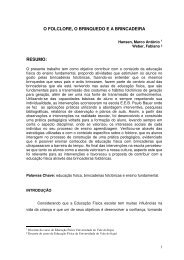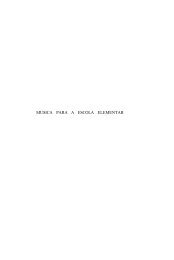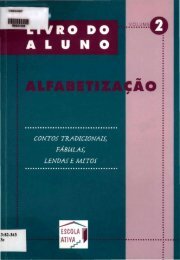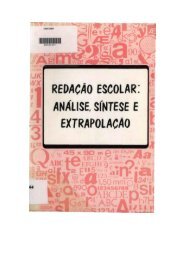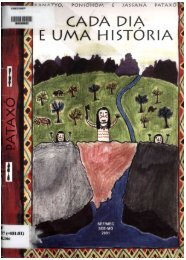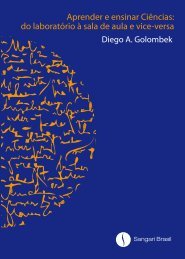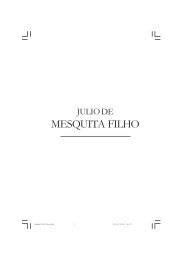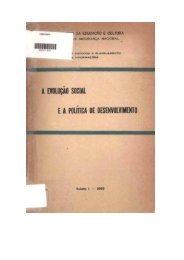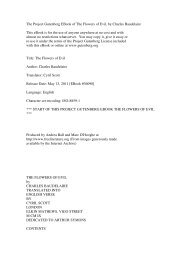A History of English Literature
A History of English Literature
A History of English Literature
You also want an ePaper? Increase the reach of your titles
YUMPU automatically turns print PDFs into web optimized ePapers that Google loves.
very arbitrarily manipulated for the sake <strong>of</strong> the effects in rather<br />
free-and-easy disregard <strong>of</strong> all principles <strong>of</strong> motivation. But the kindly<br />
knowledge <strong>of</strong> the main forces in human nature, the unfailing sympathy, and<br />
the irrepressible conviction that happiness depends in the last analysis on<br />
the individual will and character make Goldsmith's writings, especially<br />
'The Vicar,' delightful and refreshing. All in all, however, 'The Deserted<br />
Village' is his masterpiece, with its romantic regret, verging on tragedy<br />
but s<strong>of</strong>tened away from it, and its charming type characterizations, as<br />
incisive as those <strong>of</strong> Chaucer and Dryden, but without any <strong>of</strong> Dryden's biting<br />
satire. In the choice <strong>of</strong> the rimed couplet for 'The Traveler' and 'The<br />
Deserted Village' the influence <strong>of</strong> pseudo-classicism and <strong>of</strong> Johnson<br />
appears; but Goldsmith's treatment <strong>of</strong> the form, with his variety in pauses<br />
and his simple but fervid eloquence, make it a very different thing from<br />
the rimed couplet <strong>of</strong> either Johnson or Pope. 'The Deserted Village,' it<br />
should be added, is not a description <strong>of</strong> any actual village, but a<br />
generalized picture <strong>of</strong> existing conditions. Men <strong>of</strong> wealth in England and<br />
Ireland were enlarging their sheep pastures and their hunting grounds by<br />
buying up land and removing villages, and Goldsmith, like Sir Thomas More,<br />
two hundred years earlier, and likewise patriots <strong>of</strong> all times, deeply<br />
regretted the tendency.<br />
PERCY, MACPHERSON, AND CHATTERTON. The appearance <strong>of</strong> Thomson's 'Winter' in<br />
1726 is commonly taken as conveniently marking the beginning <strong>of</strong> the<br />
Romantic Movement. Another <strong>of</strong> its conspicuous dates is 1765, the year <strong>of</strong><br />
the publication <strong>of</strong> the 'Reliques [pronounced Relics] <strong>of</strong> Ancient <strong>English</strong><br />
Poetry' <strong>of</strong> the enthusiastic antiquarian Thomas (later Bishop) Percy. Percy<br />
drew from many sources, <strong>of</strong> which the most important was a manuscript<br />
volume, in which an anonymous seventeenth century collector had copied a<br />
large number <strong>of</strong> old poems and which Percy rescued just in the nick <strong>of</strong> time,<br />
as the maids in the house <strong>of</strong> one <strong>of</strong> his friends were beginning to use it as<br />
kindling for the fires. His own book consisted <strong>of</strong> something less than two<br />
hundred very miscellaneous poems, ranging in date from the fourteenth<br />
century to his own day. Its real importance, however, lies in the fact that<br />
it contained a number <strong>of</strong> the old popular ballads (above, pp. 74 ff).<br />
Neither Percy himself nor any one else in his time understood the real<br />
nature <strong>of</strong> these ballads and their essential difference from other poetry,<br />
and Percy sometimes tampered with the text and even filled out gaps with<br />
stanzas <strong>of</strong> his own, whose sentimental style is ludicrously inconsistent<br />
with the primitive vigor <strong>of</strong> the originals. But his book, which attained<br />
great popularity, marks the beginning <strong>of</strong> the special study <strong>of</strong> the ballads<br />
and played an important part in the revival <strong>of</strong> interest in medieval life.<br />
Still greater interest was aroused at the time by the Ossianic poems <strong>of</strong><br />
James Macpherson. From 1760 to 1763 Macpherson, then a young Highland Scots<br />
schoolmaster, published in rapid succession certain fragments <strong>of</strong> Gaelic<br />
verse and certain more extended works in poetical <strong>English</strong> prose which, he<br />
asserted, were part <strong>of</strong> the originals, discovered by himself, and<br />
translations, <strong>of</strong> the poems <strong>of</strong> the legendary Scottish bard Ossian, <strong>of</strong> the<br />
third Christian century. These productions won him substantial material<br />
rewards in the shape <strong>of</strong> high political <strong>of</strong>fices throughout the rest <strong>of</strong> his<br />
long life. About the genuineness <strong>of</strong> the compositions, however, a violent<br />
controversy at once arose, and Dr. Johnson was one <strong>of</strong> the skeptics who<br />
vigorously denounced Macpherson as a shameless impostor. The general<br />
conviction <strong>of</strong> scholars <strong>of</strong> the present day is that while Macpherson may have<br />
found some fragments <strong>of</strong> very ancient Gaelic verse in circulation among the<br />
Highlanders, he fabricated most <strong>of</strong> what he published. These works, however,<br />
'Fingal' and the rest, certainly contributed to the Romantic Movement; and<br />
they are not only unique productions, but, in small quantities, still<br />
interesting. They can best be described as reflections <strong>of</strong> the misty scenes





